
From Normandy to Berlin WWII
(Updated Aug 24, 2010)
Sgt.
Benjamin Augustus
White
-- A Soldiers story --

"Our Ancestors have answered the call... time and again"
Robert White Sr. served 6 years in the Revolutionary War, the
War of Independence. (1776)
Benjamin Franklin White (son of Robert Sr.) served in the War of 1812, & Maj
in the Civil War.
Benjamin A White's grandfather Thomas Monroe White served in the Civil War
fighting for the....
Waterhouse Regiment of the , 19th Texas Infantry, others served their country to
perpetuate their ...
their Nation's eternal dreams of Freedom & Peace, for all mankind.
Forever,
Vigilant!
"Benjamin A. White's time came to answer a great
threat to our civilization and all mankind, their sacrifices
brings us here today and the dream continues..."
"As we stand here today - witnesses to this great war for our right to exist as diverse human beings, in peace and freedom with all peoples - We must never forget this great sacrifice, by our fellow Americans, Fathers, Mothers and Grandparents, they have brought you and me here today, fulfilling their dream of a better life, and a safer world for their children and grandchildren, for generations yet to come. As their generation recedes in time, their eternal light begins to shine within us all, remember them! As we stand here today - only, as a result of their ultimate sacrifices".
|
|
|||||||||||
|
A Soldiers story "Soliders,
Sailors & Airmen of the Allied Expeditionary Force! Sir Winston Churchill comments, while addressing "This is undoubtedly the greatest American battle "The object
of war is not to |
|||||||||||
|
. . . . . . . . 507th Parachute Infantry Soldiers |
|||||||||||
|
82nd Airborne - D-Day - Normandy - Operation
Neptune
18,000 Airborne began jumping late night
June 5th, into |
|||||||||||
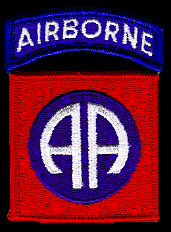 82nd Airborne Patch |
 American Deaths in WWII = 407,316 Total American Casualties = 1,078,162 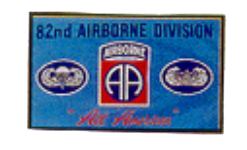 82nd Division Flag |
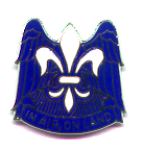 82nd Division Crest  Rank of Benjamin = Sergeant |
|||||||||
|
Sgt. Benjamin Augustus White Regiment: 507th Parachute Infantry 82nd Airborne Division adding: 17th Airborne Division Picture on right at Camp Roberts, |
|
||||||||||
|
|
|
||||||||||
|
Campaigns: Normandy ( D Day): Was dropped behind the lines on top the the rear guard of the Germans the day before the actual beach landing at Omaha/Utah Beach. 835 soldiers of the 507th were killed or wounded, in the Normandy Campaign. D-Day - (82nd
Airborne) Jun
6, 1944 Ardennes -
Dec 26, 1944 Bastogne
-
Jan 2, 1945 Our River - Luxembourg Jan/Feb 1945 River Rhine
-
Mar 24, 1945 Elbe River
-
Apr 25, 1945 Other Battles not listed here... Picture taken France 1945. |
|
||||||||||
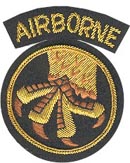 17th Airborne Div Patch |
 Airborne Cap Patch |
||||||||||
|
In Ben White's own words: "There were many other battles on the way to Berlin, though the Battle of the Bulge was the largest. More than a million men in this battle, the greatest battle in World War II. Biggest battle ever fought buy American's, in any war. It was mostly Americans, there were a lot more Battles, Normandy (D-Day), The Jump over the Rhine River, all the way to Berlin. Then, we met the Russians a few miles from Berlin. They and our Tanks came together, we all shook hands, hugged each other, our officers had a toast of Vodka, was the happiest day of all... The war was over May 8th 1945. June 6th 1944 to May 8th 1945. Just about a year of solid fighting with very little rest or breaks. Oh hell! we were ragged and torn, bloody, and ready for a break and some sleep..." 81,000 Total American Casualties |
|
||||||||||
|
WWII Metals earned by Benjamin White
There were other metals awarded the Unit and Individuals
|
|||||||||||
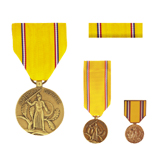 American Defense Metal |
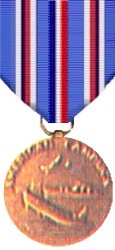 American Campaign |
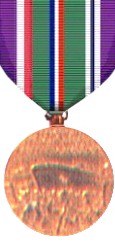 EAME Campaign Metal |
 4 - Bronze Metals |
||||||||
 Victory Metal |
 1 - Service Stripe |
3 - Overseas Bar's |
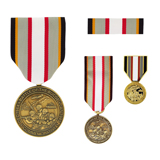 Battle of the Bulge |
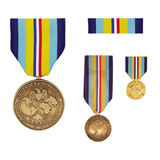 Overseas Service Metal |
|||||||
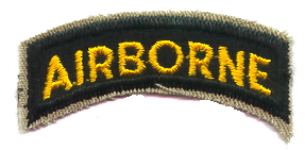 Airborne Shoulder Patch |
|||||||||||
|
"507 - Company D - Parachute Infantry 82nd Airborne - It took us six weeks to fight our way into, rescue the 101st Airborne and get them out of that mess! We came in with General George S. Patton's tanks to rescue them, then that's when the Battle of the Bulge started for six weeks, after that on to the Rhine River, then Germany, then Berlin and finally it was over". Benjamin White
|
|
||||||||||
|
Ben Served with the 101st Airborne |
|||||||||||
|
|
|
||||||||||
|
[697 soldiers of the 507th died in this Battle.] The Battle of the Bulge, was one of American's greatest hours in the field of battle. And helped turn the tide of war. Three powerful German armies plunged headlong into the rugged mountains and dense forests of the Ardennes determined to break the American line of defense, and trap the Allied Forces in Belgium and Luxembourg. They met fierce opposition the minute they engaged the thinly spread American line. And paid a heavy price for every inch of ground they gained. The fighting raged for three consecutive days until powerful Allied reinforcements arrived to join the fighting, and keep the Germans from breaking through. The fighting then continued for four weeks in bitter cold and snow, and all the Germans could accomplish was to put a small 'bulge' in the line. And at the end, the line held firm and the Germans suffered a terrible loss of men, tanks and planes. Fifty-six years ago, 600,000 Americans fought together in the snowy, windswept hills and forests of the Ardennes. From December 16, 1944, until January 25, 1945, the bitter fighting raged, claiming 19,000 American lives. When, at last, the guns fell silent, the German drive to reach the sea, trap four allied armies and impel a negotiated peace on the Western Front had been thwarted. Thanks to the uncommon valor of the American GI and the heroic efforts of individual units in this decisive battle--the greatest ever fought by the U.S. Army--the end of World War II in Europe was hastened. |
Ardennes: Where: When: Who: 55,000 British Casualties: Equipment: Massacre of American Soldiers:
|
||||||||||
|
|
|||||||||||
|
This is my fathers story, it has taken many years to get him to talk about this... The War doesn't end just because the guns go silent, the effects on human kind last for many years beyond the ends of these conflicts, for many the effects may last forever, though Ben will talk about the War in general, it is still to difficult to talk about the loss of life and friends. Ben commented once, "of the original platoon he landed with at Normandy, he was one of several who survived", many were killed before their feet ever touched the earth, they were dropped virtually on top of the German rear guard, at Normandy, many of those Germans crack SS troops. This was before the beach landing at Omaha ever took place. Once they landed, it took almost 2 weeks for the Americans to get to them from the beach. They survived as roving combat teams. They went days without food or water, they ate anything they could get their hands on, dead farm animals was mentioned. He related, on his descent from the plane at Normandy, he could see German tracer bullets coming at him, they also used flame throwers, Ben's chute caught fire, he lost his grip on his machine gun and it plunge hard against the ground, he also hit pretty hard, Germans troops charged out the the tree line, throwing grenades, shooting, throwing any and everything at them, Ben recovered his machine gun, took aim and began firing, to his utter horror, it would only fire one round at a time, but they were able to push the Germans back, and lived to fight another day. Though this was a fierce battle, little did he know, at that time, the worst was yet to come, "The Battle of the Bulge". Ben emphasizes, that there were many battles, all the way to Berlin, many died in these other battles, some small others large, but to them they were all Battle of the Bulges... this campaign to get to Berlin lasted almost a year, and there was no let up, they got little sleep and few breaks. Ben also says he wondered at times how he could have survived, his helmet had bullet dents and shrapnel dings, when some battles finished their cloths were torn to shreds they were bloody, and even today he still carries some shrapnel in his body. After the War in Europe was won, Ben's unit was told they were going home, but orders came and their ships were directed toward Japan, many felt this unfair, they believed they had earned the right to go home, and were severely demoralized. They all realized, that they were lucky to have survived the War in Europe, most believed they would be killed in Japan. However, the atomic bombs were dropped over Japan and the Japanese surrendered, the War was over, and they went home. Ben's unit was transferred to the 'Queen Mary' and were ferried into New York Harbor, the sight of the 'Status of Liberty' must have have silenced our hero's for a moment, and reaffirmed the price of Freedom, God had Blessed them all... Benjamin White Died May 2007 |
|||||||||||
|
Pictures from Ben White
|
|
Allied Chain of Command
and Order of Battle (507th Parachute Airborne was under this command up to & including D-Day) Supreme Allied Commander 21st Army Group First Army VII Corps
|
|||||||||||||||||||||||||||||||||||||||||||||||||||||||||||||||||||||||||||||||||||||||||||||||||||
|
17th AIRBORNE DIVISION
|
|||||||||||||||||||||||||||||||||||||||||||||||||||||||||||||||||||||||||||||||||||||||||||||||||||||||||||||||||||||||||||||||||||||||||||||||||||||||
|
17th AIRBORNE DIVISION Note: COMMAND AND STAFF Commanding General
Assistant Division Commander
Commanding Officer, 507th Parachute Infantry
STATISTICS Chronology
Casualties (Tentative)
Campaigns Rhineland Individual Awards
Prisoners of War Taken = 17,344 COMPOSITION 507th
Parachute Infantry [assigned 1 Mar 45 reorganization] ATTACHMENTS Infantry
DETACHMENTS Infantry
COMMAND POSTS
|
|||||||||||||||||||||||||||||||||||||||||||||||||||||||||||||||||||||||||||||||||||||||||||||||||||||||||||||||||||||||||||||||||||||||||||||||||||||||
|
17th AIRBORNE |
|||||||||||||||||||||||||||||||||||||||||||||||||||||||||||||||||||||||||||||||||||||||||||||||||||||||||||||||||||||||||||||||||||||||||||||||||||||||
|
The 17th "Thunder from Heaven"
Airborne Division was activated at Camp Mackall on April 15, 1943 under the
command of General William M Miley. (pictured
left) The core units of the newly formed division
were the 513th Parachute Infantry Regiment (PIR), the 193rd and 194th Glider
Infantry Regiments (GIR). After the Normandy invasion the 507th Parachute
Infantry Regiment was permanently attached to the division which was stationed
in the United Kingdom from 25 August to 23 December 1944. Toward the end of August, 1944 the 17th Airborne Division, the 82nd Airborne Division and the 101st Airborne Division became permanent units of the U.S. XVIII Airborne Corps. When Operation Market Garden was conceived the 17th Airborne was still in training. Consequently, it was held in reserve. This was not the case during the German Ardennes Offensive. Battle of the Bulge - The Ardennes Offensive From 23 to 25 December, elements of the Division were flown to the Reims area in France in spectacular night flights. These elements closed in at Mourmelon. After taking over the defense of the Meuse River sector from Givet to Verdun, 25 December, the 17th moved to Neufchateau, Belgium, then marched through the snow to Morhet, relieving the 28th Infantry Division, 3 January 1945. The Division entered the Ardennes campaign, 4 to 9 January, at the Battle of Dead Man's Ridge. It captured several small Belgian towns and entered Flamierge, 7 January, but enemy counterattacks necessitated a withdrawal. However, constant pressure and aggressive patrolling caused the enemy to retreat to the Ourthe River. On 18 January, the Division relieved the 11th Armored Division at Houffalize, pushed enemy remnants from the Bulge, and seized Wattermal and Espeler, 26 January. Coming under the III Corps, the 17th turned toward Luxembourg, taking Eschweiler and Clervaux and clearing the enemy from the west bank of the Our River. Aggressive patrols crossed the river to probe the Siegfried Line defenses and established a limited bridgehead near Dasburg before being relieved by the 6th Armored Division, 10 February. Operation Varsity - The Airborne Assault on the Rhine In early February 1945, the tide of battle was such as to enable an accurate estimate as to when and where the 2nd British Army would be ready to force a crossing of the Rhine River. It was determined that the crossing would be in conjunction with an airborne operation by XVIII Airborne Corps. The sector selected for the assault was in the vicinity of Wesel, just north of the Ruhr, for 24 March 1945. Operation Varsity would be the last full scale airborne drop of World War II and the assignment went to the 17th Airborne Division with the 507th spearheading the assault dropping at the southern edge of the Diersfordter Forest, three mile northwest of Wesel. Finally, on the 24th March 1945, taking off from marshalling areas in France in nearly perfect weather, nearly 4000 aircraft from the British 6th Airborne Division and the 17th US Airborne Division dropped fighting men behind enemy lines, into Westphalia in the vicinity of Weselon which was east of the Rhine River. Their mission was to capture key points and so assist the advance of the ground troops. Having learned the lessons from the Arnhem battle, the gliders and paratroops landed close to their targets and achieved total success. Operation Varsity was the first airborne invasion over the Rhine into Germany itself. On the 25th, the Division had secured bridges over the Issel River and had entrenched itself firmly along the Issel Canal. Moving eastward, it captured Haltern, 29 March, and Munster, 2 April. The 17th entered the battle of the Ruhr Pocket, relieving the 79th Infantry Division. It crossed the Rhine-Herne Canal, 6 April, and set up a secure bridgehead for the attack on Essen. The "Pittsburgh of the Ruhr" fell, 10 April, and the industrial cities of Mulheim and Duisburg were cleared in the continuing attack. Military government duties began, 12 April, and active contact with the enemy ceased, 18 April. The Division came under the XXII Corps 24 April. It continued its occupation duties until 15 June 1945 when it returned to France for redeployment. In September, 1945, the 17th Airborne Division returned home and was disbanded. OPERATION VARSITY (Another description) Operation Varsity: The Allied Parachute Assault Across The Rhine March 24, 1945v.1.0 February 3, 2002 Introduction At 10 a.m., more than a million Allied and German ground troops in and around the Rhineland city of Wesel watch as the sky fills with aircraft: 1795 transports and 1050 tugs towing 1305 gliders. This is U.S. XVIII Airborne Corps, an American-British formation commanded by General Matthew Ridgeway of the U.S. Army. They are executing Operation VARSITY, the biggest airborne assault in history and the key phase of the Allies' big push across the Rhine. Unlike previous Allied airborne operations, Op VARSITY takes place in broad daylight, timed to coincide precisely with the ground assaults. Gen Ridgeway's audacious plan is to drop the Allied front line right into the heart of the German defences-about 6.5 km east of the Rhine, on a heavily defended, tactically crucial ridge abutting the river. Allied Forces [c. 14,000 airborne troops including 9,387 US]
Casualties
|
|
|
|
|
The 507th Parachute
Infantry Regiment
|
|
|
The 507th Parachute Infantry Regiment (PIR) was
activated on July 20, 1942 at Camp Toccoa, Georgia which was located 175 miles
north of Fort Benning adjacent to the Currahee Mountain. Lieutenant Colonel
George V Millett Jr was given the command. After jump-training at Fort Benning
the regiment deployed to the Army air base at Alliance, Nebraska and became part
of the 1st Airborne Brigade. (Picture above right: Staff Sgt Donald E Bosworth, 1st Battalion HHC, (right) next to receive Silver Star for D-Day action.) Throughout the confusion the indomitable spirit of the paratroopers in the days and weeks following D-Day enabled the 82nd Airborne to seize La Fiere bridge and push westward to cut off the Cotentin Penninsula. After 33 days of continuous combat the 82nd and 101st Airborne Divisions returned to England aboard LSTs.In August, 1944 General Matthew Ridgeway the 82nd Airborne Commanding General was promoted and took command of the newly formed XVIII Airborne Corps which included the 17th, 82nd and 101st Airborne Divisions. The 504th PIR which sat out the Normandy drop because of depleted ranks suffered at Anzio was now at full strength. Since the 17th Airborne Division was now training in England and in need of another parachute regiment to full out its ranks, it was determined that the battle-tested 507th PIR would be permanently assigned to it. The 17th Airborne Division under General Miley's command would not participate in Operation Market Garden. Instead, it was held in strategic reserve while completing their training. Battle of the Bulge - The Ardennes Offensive The Germans launched their last great offensive in Belgium on 16 December, driving west through thinly held positions, and catching the Allies unprepared. Maj. Gen. Troy Middleton's VIII Corps was giving way, and he desperately needed reinforcements. The 82nd and 101st Airborne Divisions had recently disengaged from operations in Holland and were training and refitting in base camps in the Reims-Suippes-Sissonne area of France. The 17th Airborne Division was in training at base camps in Wiltshire and Surrey, England. Corps Headquarters and Corps troops were split between Epernay, France and Ogbourne St. George, England. The initial success of the enemy counter-offensive resulted in a decision by General Eisenhower, Supreme Commander, SHAEF to detach the XVIII Airborne Corps from the FAAA and attach it to the Twelfth Army Group. Meanwhile, concurrent action had been taken to move the 82nd and 101st Airborne Divisions by truck to the vicinity of Bastogne, Belgium which was the concentration area assigned by the First U.S. Army. Poor weather conditions initially kept the 17th Airborne Division in England. However, they were later able to fly into action from England and fought under the Third U.S. Army. From 23 to 25 December, elements of the Division were flown to the Reims area in France in spectacular night flights. These elements closed in at Mourmelon. After taking over the defense of the Meuse River sector from Givet to Verdun, 25 December, the 17th moved to Neufchateau, Belgium, then marched through the snow to Morhet, relieving the 28th Infantry Division, 3 January 1945. Initially, the 507th PIR and the 193rd Glider Infantry Regiment (GIR) were kept in reserve in anticipation of a German counter attack. However, once the 17th Airborne Division cleared the western side of Bastogne of all German units, the 507th PIR and the 193rd GIR turned eastward and led an attack across Luxembourg to the Our River. On February 10, 1945 the 507th PIR was relieved and returned to its base camp at Chalons-sur-Marne in France. Operation Varsity - The Airborne Assault on the Rhine In early February 1945, the tide of battle was such as to enable an accurate estimate as to when and where the 2nd British Army would be ready to force a crossing of the Rhine River. It was determined that the crossing would be in conjunction with an airborne operation by XVIII Airborne Corps. The sector selected for the assault was in the vicinity of Wesel, just north of the Ruhr, on 24 March 1945. Operation Varsity would be the last full scale airborne drop of World War II and the assignment went to the 17th Airborne Division with the 507th spearheading the assault dropping at the southern edge of the Diersfordter Forest, three mile northwest of Wesel. It was during this operation that Pfc George J Peters of the 507th won the Congressional Medal of Honor. Pfc Peters and a group of 10 other troopers landed in an open field near the town of Fluren. Raked by enemy machine gun fire the troopers laid there helplessly. Peters, armed with only his rifle and a few grenades took it upon himself to charge the German machine gun nest. After receiving several wounds and bleeding profusely Peters crawled to within 15 feet of the gun enplacement and pitched two grenades into the enemy stronghold. The ensuing explosion silenced the machine gun and its crew. Operation Varsity was a text book success. All of the units had performed in an amazing fashion shattering the German defenses in four and a half hours. In the ensuing days the 17th Airborne would lead the thrust into the heartland of Germany. On April 10th the 507th captured Essen, the home of the Krupps Steelworks. On May 7, 1945, General Alfred Jodl signed the instrument of surrender in Rheims, France. The ceremony was repeated the next day in Berlin for the benefit of the Russians and President Truman declared May 8 as V-E Day. In September, 1945 the 17th Airborne Division was shipped home and deactivated. |
|
|
|
The 82nd Airborne
during World War II
|
|
Operation Overlord - the invasion of
Normandy commenced on June 6th, 1944 - "D-Day". The Allied
assault from Britain across the English Channel onto the beaches of France would
be the greatest seaborne military operation in history. However, an integral
part of the D-Day assault was its initial airborne operation. |
|
The 82nd
Airborne during World War II 380 Soldiers of the 507th died in this Campaign
After a foothold was gained in France, the Allies
reorganized their airborne divisions. In August, 1944 the First Allied Airborne
Army (FAAA) was formed under the command of Lt General Lewis H Brereton. It was
composed of the U.S. XVIII Airborne Corps, the IX Troop Carrier Command, and the
British I Airborne Corps. The U.S. XVIII Airborne Corps consisted of the 82nd,
101st and 17th Airborne Divisions. It was commanded by General Ridgeway while
General Gavin now assumed command of the 82nd Airborne Division. The new
airborne army's first operation would be Operation Market
Garden. |
|
The 82nd Airborne
during World War II
At about 1930 hours on the
night of 17 December 1944, General Gavin received a call from Supreme
Headquarters Allied Expeditionary Forces (SHAEF) that the enemy had
broken through into Belgium and Luxembourg with a powerful thrust
launched south of Aachen. Since the airborne divisions were located at
Camp Suippes and Sissone, France, they were the closest reinforcements
available. Immediately after being
alerted, the 82nd went into a frenzy of packing and preparation for
combat. "A" and "B" bags were packed and stored,
combat shortages filled, ammunition and rations drawn. Dawn of the 18th
found the division a little short on sleep, but in every other sense,
fully equipped and ready for combat. Big trailer-trucks had roared into
the area during the night and were waiting to take the paratroopers to
the scene of the breakthrough. Most men were grouchy and in no mood to
go back into action. They had just begun to relax from the Holland
mission. However, with remarks such as, "Well, I'd rather go into
these things than in a damn C-47 and "Why aren't they making us
walk - it's only 200 miles", they resigned themselves to their
fate. |
|
The 82nd
Airborne during World War II
Operation Eclipse was an
audacious plan for a parachute assault by more than two airborne
divisions in an effort to capture Berlin ahead of the Russians. The plan
called for the 82nd to seize the airfields at Tempelhof and Rangdor
while the 101st would capture two others. The plan was the brainchild of
Lewis Brereton's First Allied Army Airborne staff. Winston Churchill and
Field Marshall Montogomery were avid supporters of the plan while
General Eisenhower didn't see it's "military" significance.
Irregardless, the 82nd conducted dress rehearsals. |

|
|
The 82nd Airborne Division is the oldest airborne division in the U.S. Army. It had been reorganized from an infantry division in the early days of World War II and had undergone extensive training stateside. Units from the division had seen combat in North Africa, Sicily and Italy during the early phases of the war in the Mediterranean. In November 1943 the 82nd was recalled from Italy, where the division's paratroopers had made a parachute assault on the beachhead near Salerno. For D-Day, the division was composed of the following airborne regiments: 505th Parachute Infantry, 507th Parachute Infantry and the 325th Glider Infantry. The 504th Parachute Infantry, which had remained in combat in the Mediterranean, was detached to rest and absorb replacements in England. It was reattached to the division after D-Day. The division commander, Maj. Gen. Matthew B. Ridgway, was a highly capable, competent, and inspirational leader who had commanded the 82nd from its inception as an airborne unit through all its earlier campaigns in North Africa, Sicily, and Italy. Brig. Gen. James Gavin was assistant division commander. This highly talented and charismatic leader had been promoted to this position in Italy and later became division commander after Ridgway was promoted. The main objective for the 82nd on D-Day was to secure the bridges over the rivers behind Utah Beach. The division was to land astride the Merderet River and seize, clear, and hold its area of operation. After destroying all crossings over the Douve River, the 82nd was to be prepared to move west on order. For the invasion, the division had designated over 6,000 paratroopers for the parachute assault and almost 4,000 glidermen for the glider assault. Together, with the 101st Airborne Division, the 82nd was scheduled to begin landings in the early morning hours of June 6th. Gen. Eisenhower's air operations officer had predicted casualties to be greater than 70%. The drops went badly. Cloud cover and heavy anti-aircraft fire made the air transports deviate from course, which resulted in wide-spread scattering of the paratroops. Many of the aircraft were flying too fast and some too low, often giving the green-light jump signal over the wrong drop zones. Of the 6,396 paratroopers of the 82nd who jumped, 272 or 4.24 percent were killed or injured as a result of the drop. The 505th generally landed in the vicinity of its drop zone, but the 507th and 508th were both widely scattered. Many troopers landed in the center of the village of Sainte-Mère-Église, as a fire raged out of control. German soldiers, already alerted by the fire, shot many of the paratroopers before they hit the ground. One paratrooper, John Steele, landed on top of the church. His parachute caught on the steeple, where he dangled for two and a half hours, playing dead until he was finally taken prisoner. In spite of this, the 82nd adapted to the situation and achieved all its primary objectives. Sainte-Mère-Église was secured by dawn of 6 June, the first French village to be liberated. As an anti-airborne effort, the Germans had flooded much of the adjoining area near the Merderet River. Nevertheless, by nightfall of 6 June approximately 30 percent of the division forces were under control, holding a line along the Merderet River from La Fière south to include the eastern end of the causeway over the river. The 82nd Airborne Division continued to fight on the Cotentin Peninsula until relieved on July 8, 1944, after 33 days in action. On July11th, the division moved to Utah Beach in preparation for its return to England. The 82nd later participated in Operation Market Garden and the Battle of the Bulge. COMMAND AND STAFF December,1943 - May, 1945 (ETO) Commanding General
Assistant Division Commander
Artillery Commander
Chief of Staff
Assistant Chief of Staff G-1
Assistant Chief of Staff G-2
Assistant Chief of Staff G-3
Assistant Chief of Staff G-4
Assistant Chief of Staff G-5
Adjutant General
Commanding Officer, 504th Parachute Infantry
Commanding Officer, 505th Parachute Infantry
Commanding Officer, 325th Glider Infantry
Statistics Chronology
Individual Awards
Command Posts
|
|
|
|
The 82nd Airiborne
during World War II
The double
"A" on the shoulder patch refers to the nickname "All
American Division" adopted by the organization in France during
World War I. On 25 March 1942, the 82nd Infantry
Division was reactivated at Camp Claiborne, Louisiana under the command of Major
General Omar N. Bradley (left). On August 15, 1942,
the Division took wings as The 82nd Airborne - becoming the U.S. Army's first
airborne division - now commanded by Major General Matthew B.Ridgeway (below
right). |
|
Web Sites - 82nd Airborne & others http://www.geocities.com/Pentagon/5340/18corps/17abn/17_overview.html |
Changes/Comments:
Email: mike3113@white-family.com